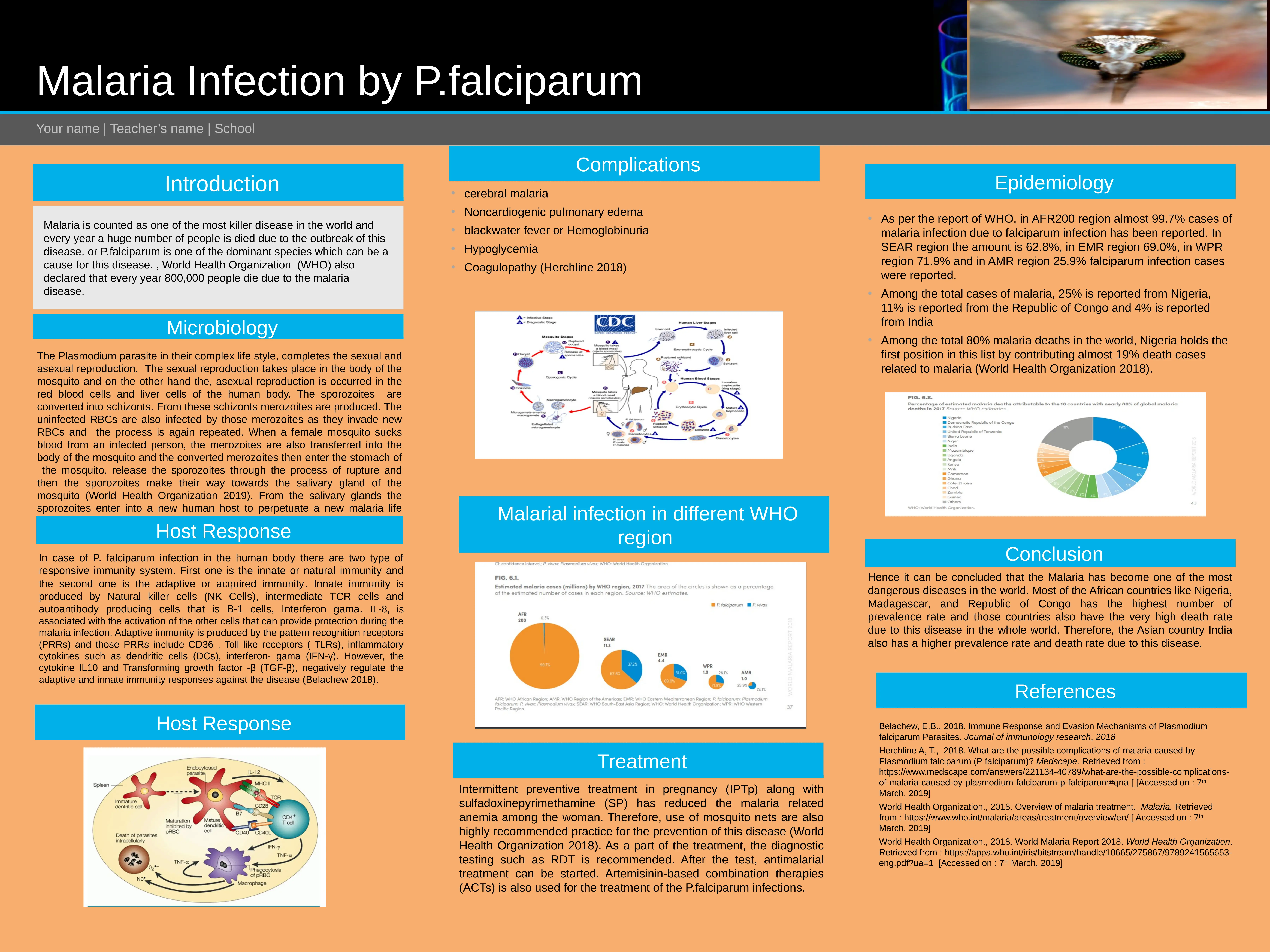Major Essay: Malaria Infection by P. falciparum - Biology
VerifiedAdded on 2023/04/24
|1
|868
|115
Essay
AI Summary
This essay provides a comprehensive overview of malaria infection caused by Plasmodium falciparum, a major contributor to global mortality. The essay delves into the microbiology of the parasite, detailing its complex life cycle, including sexual and asexual reproduction within the mosquito and human hosts, respectively. It explores the host response to the infection, differentiating between innate and adaptive immunity, and highlighting the roles of various immune cells and cytokines. The epidemiology section discusses the global distribution of malaria, focusing on the prevalence rates in different WHO regions and the countries with the highest burden of the disease, such as Nigeria and India. The essay also covers the clinical complications of malaria, the current treatment strategies, including the use of artemisinin-based combination therapies (ACTs), intermittent preventive treatment in pregnancy (IPTp), and preventive measures such as mosquito nets. Additionally, the essay touches on the future of malaria treatment and prevention, emphasizing the importance of diagnostic testing and ongoing research to combat this deadly disease.





![[object Object]](/_next/static/media/star-bottom.7253800d.svg)